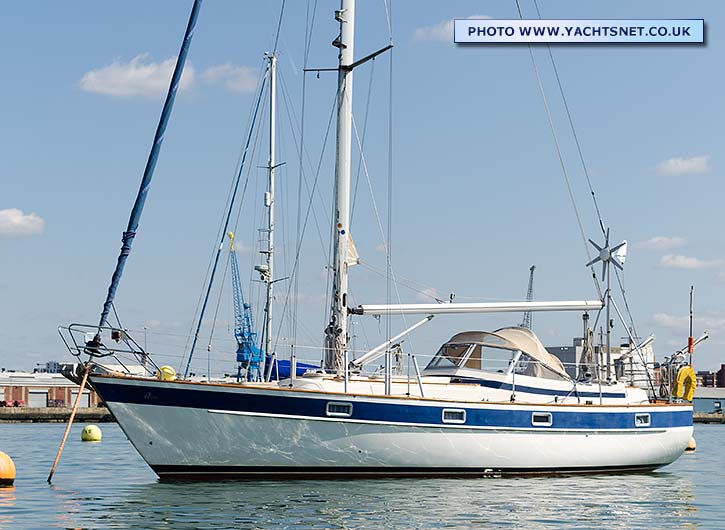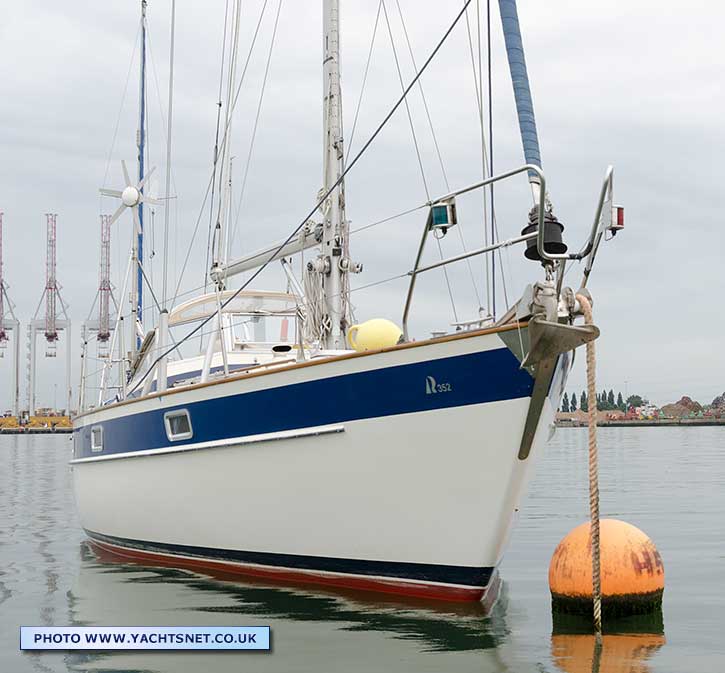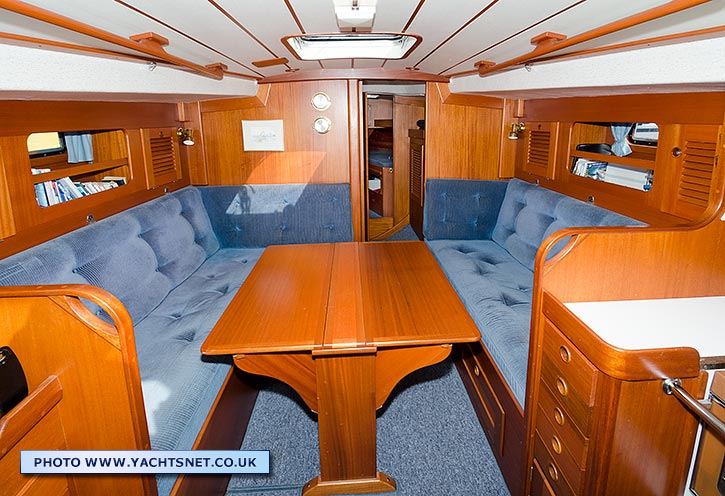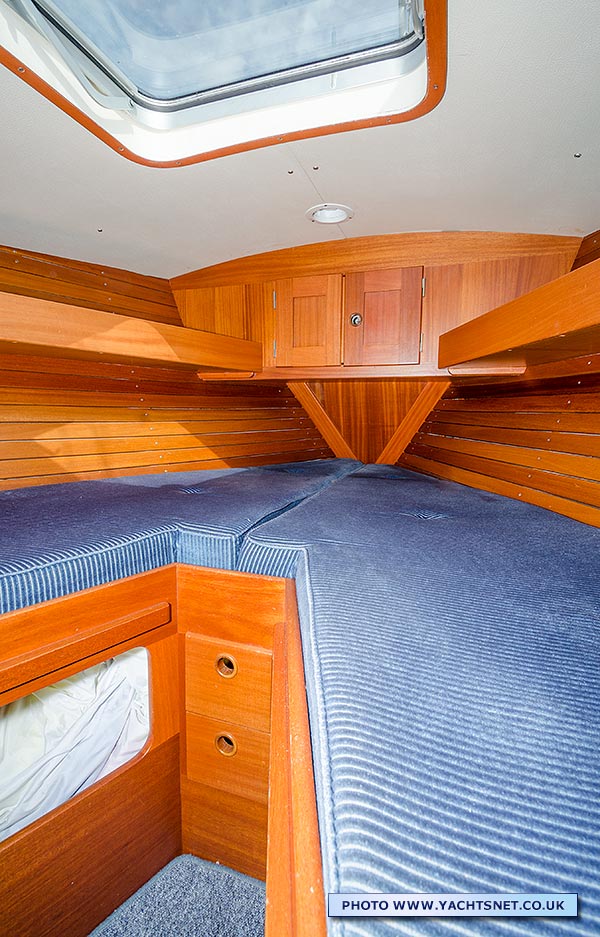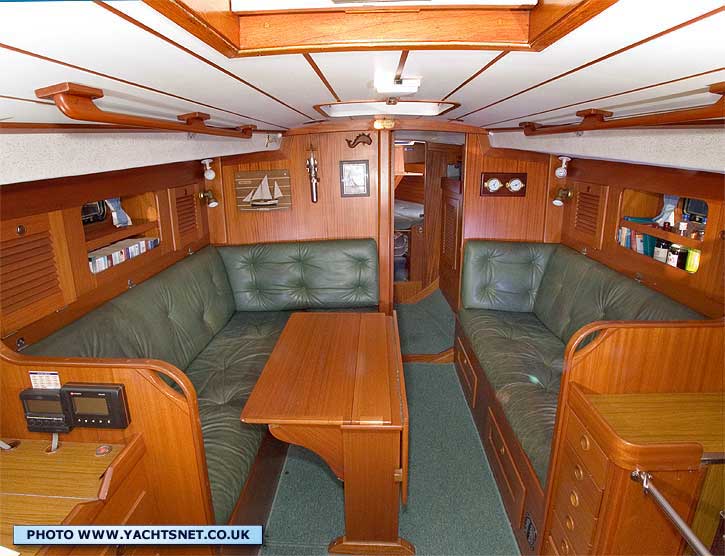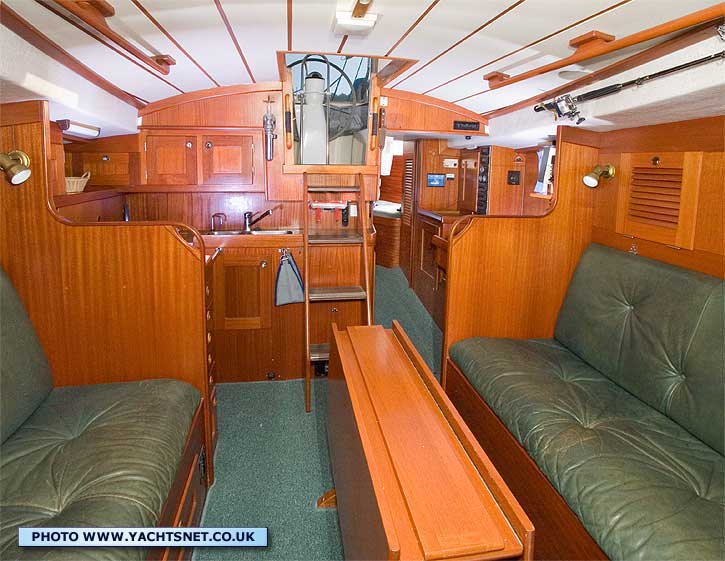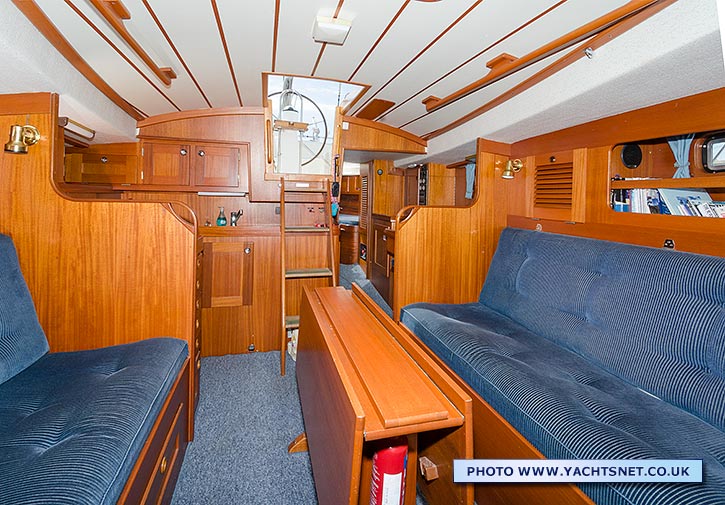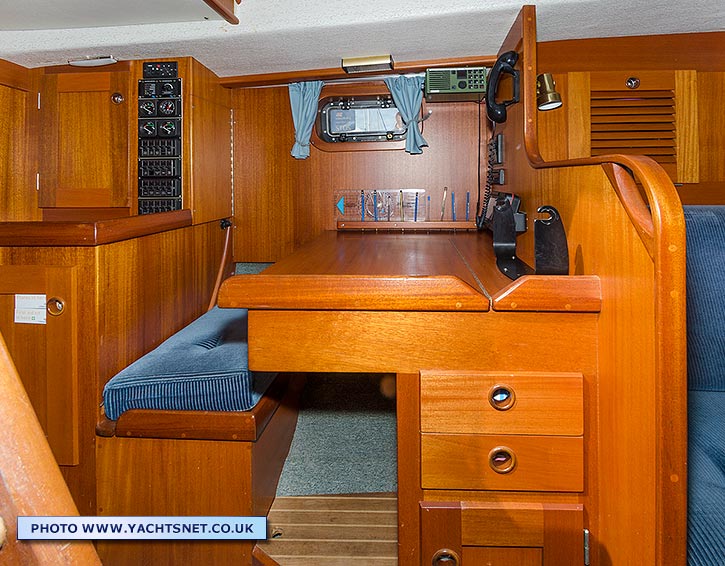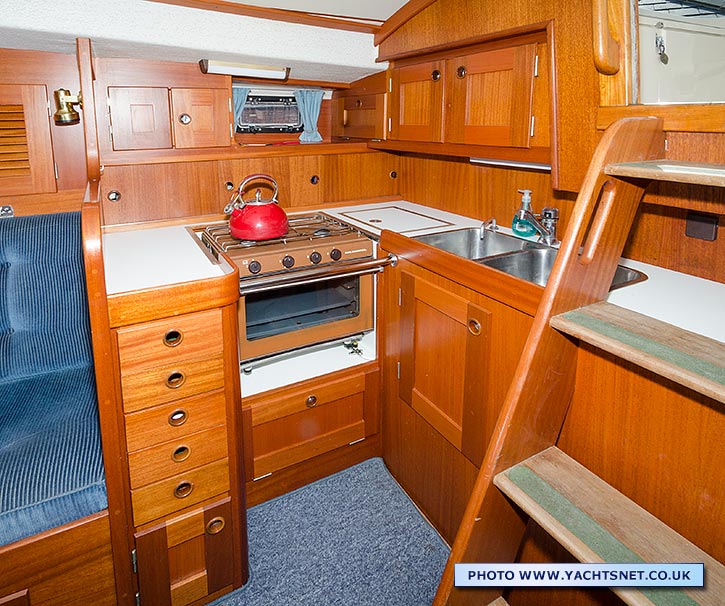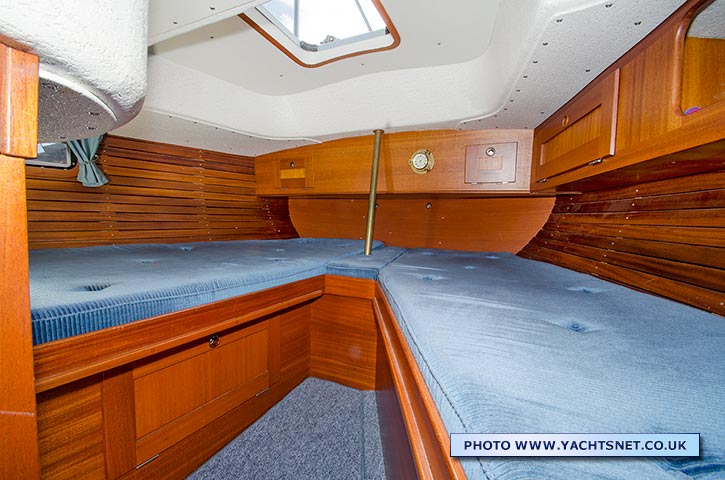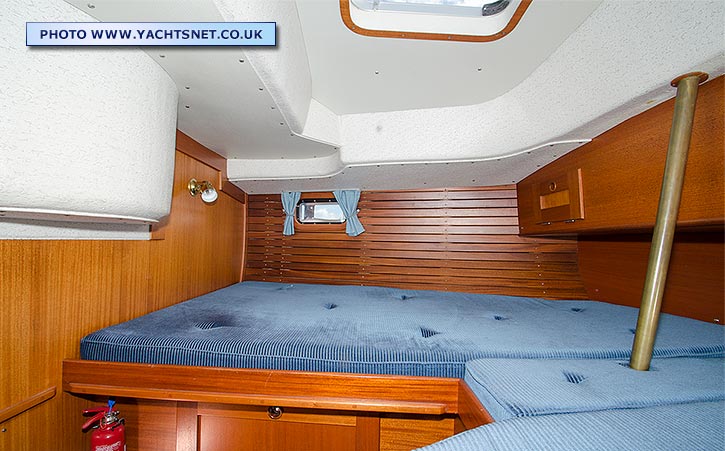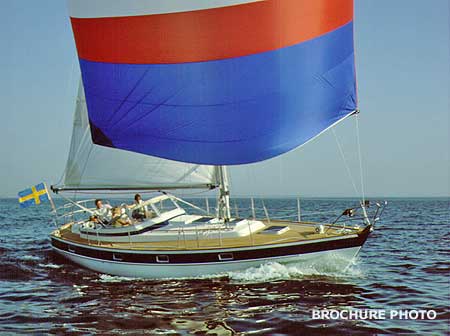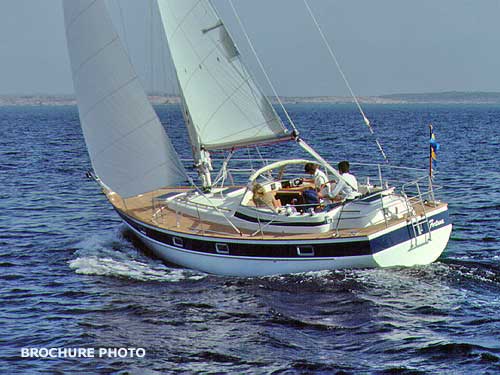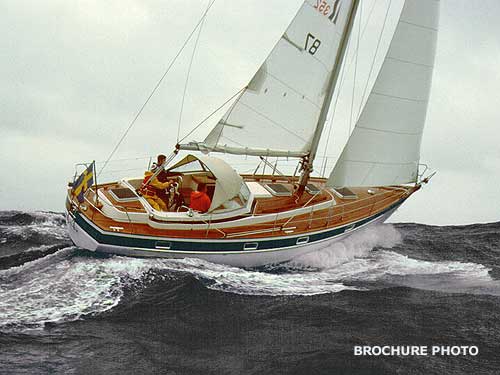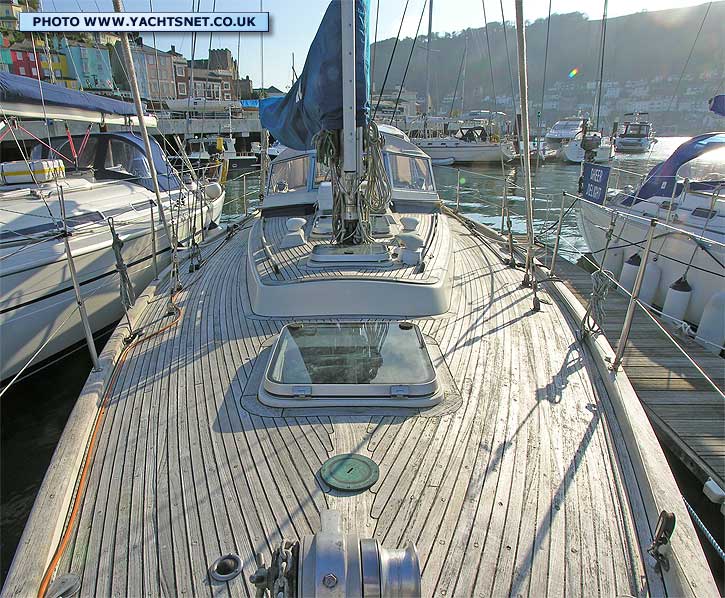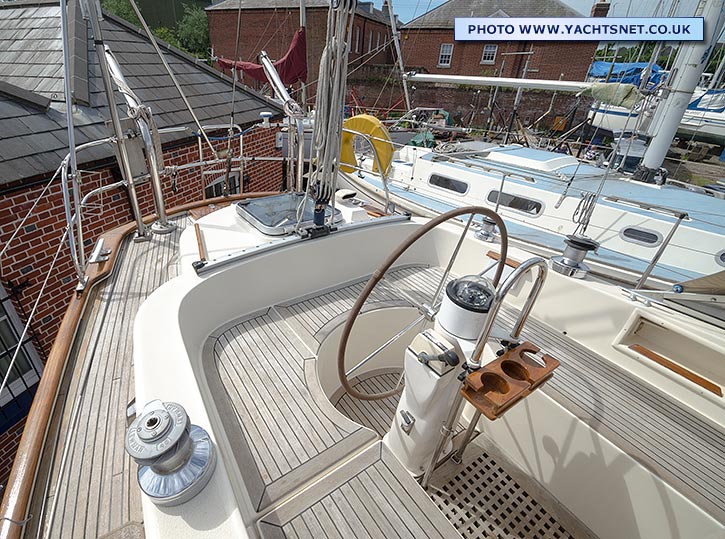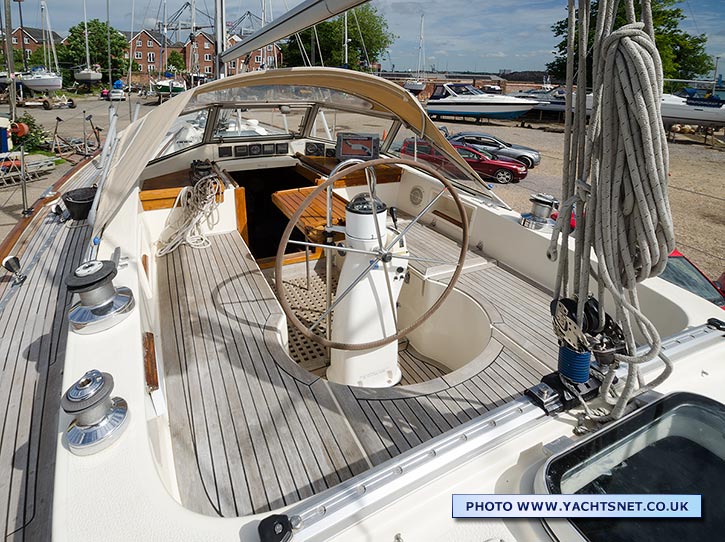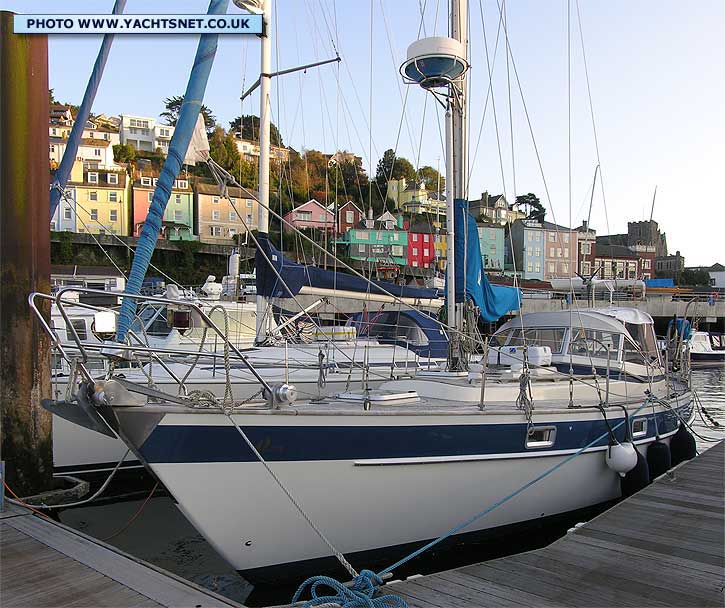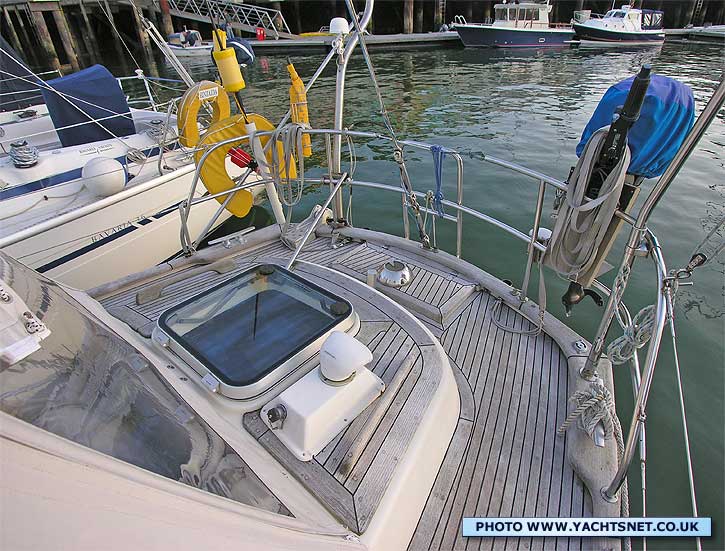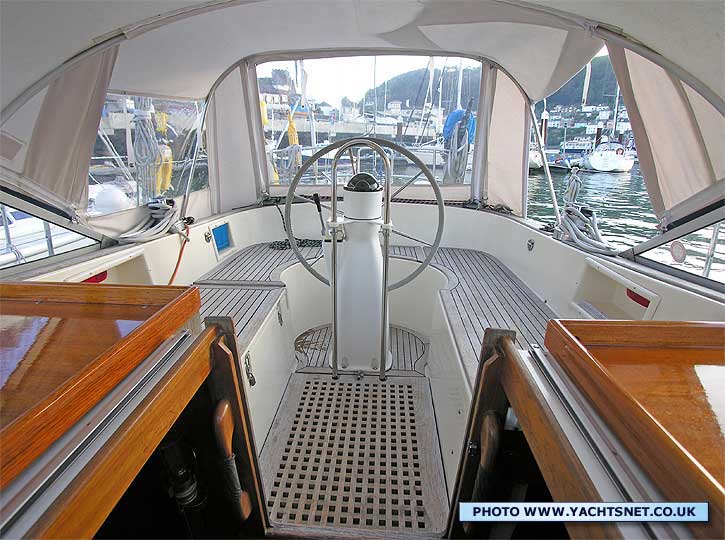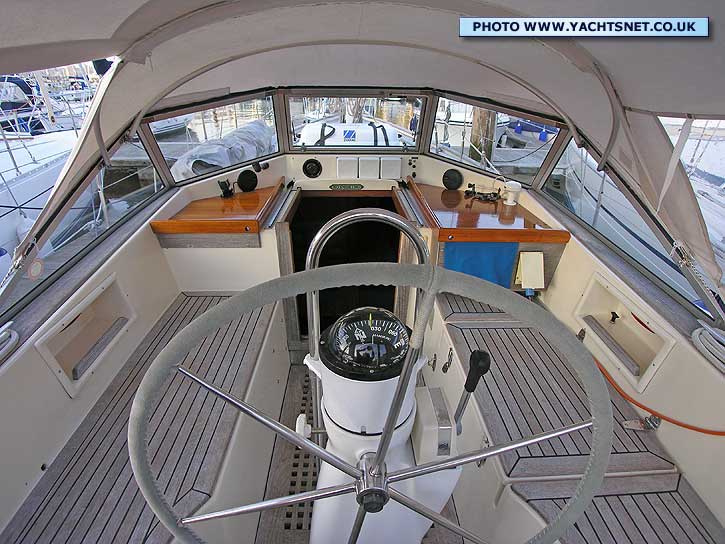| |
|
|
|
|
|
|
|
| © Yachtsnet Ltd. 2000/2025 |
|
|
|
| |
|
|
Yachtsnet's
archive of boat details and pictures
|
| |
The following information and photographs are
displayed as a service to anyone researching yacht types. HOWEVER THE PHOTOGRAPHS AND TEXT ARE COVERED BY COPYRIGHT, AND MAY NOT BE REPRODUCED WITHOUT THE PERMISSION OF YACHTSNET LTD. Details and photographs
are normally based on one specific yacht, but could be a compilation.
No reliance should be placed on other yachts of the same class being
identical. Where common variations exist, we have endeavoured
to indicate this in these archive details. |
Hallberg-Rassy 352 |
Brief Notes |
Builder |
Hallberg-Rassy Varvs AB, Sweden |
Length OA |
34' 9" |
Sail Area |
549 sq ft |
The Halberg-Rassy
352 is a very well regarded offshore and ocean cruising yacht,
with centre cockpit, a comfortable interior with walk through
access to the aft cabin, and good sailing ability. Construction
quality is excellent. With a long production run and varying
usage, some yachts having clocked up very high mileages, prices
can vary considerably - a big factor being the condition of
the teak deck, which can be very expensive to replace if necessary. |
Length WL |
28' 6" |
Rig |
Sloop |
Beam |
11' 1" |
Cabins |
Forecabin, saloon & aft cabin |
Draught |
5' 6" |
Berths |
7 |
Displacement |
14,770 lbs |
Engine type |
Volvo MD21, MD22 or MD2003 Turbo |
Ballast |
6,000 lbs iron fin |
Engine bhp |
43 - 54 |
Keel type |
Fin and skeg |
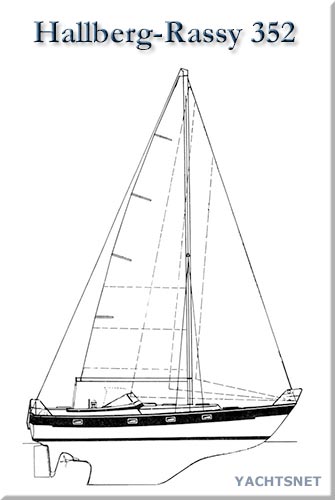 |
Over 800 Hallberg-Rassy 352s were built between 1978 and
1991, making it one of the most popular quality offshore cruisers
ever. The design was by Christoph Rassy and Olle Enderlein.
Hulls are solid GRP mouldings, built according to Lloyd's
specifications, under personal supervision of Lloyd's surveyors.
With a long encapsulated iron fin keel and skeg-hung rudder
on heavy cast bronze fittings, the HR352 is very much a solid
bluewater-capable yacht. The teak-laid decks are on a sandwich
GRP moulding, the sandwich construction using polyvinyl cellular
plastics as core material rather than the more common and
cheaper balsa. The main water and fuel tanks are also fitted
in the keel stub, improving stability, and the HR352s were
all fitted with powerful Volvo diesels.
There were various minor changes to the design over the production
perod, the most significant being small increases in hull
height in 1980 and again in 1986 to slightly increase headroom.
Early boats had two wide single berths in the aft cabin, later ones
had one double and one single. Some early boats have been modified to this newer layout. |
Two rigs were fitted, the standard single-spreader rig was the
one most often supplied to the boats destined for the UK and France,
but a taller double-spreader "Scandinavian" rig was used
for boats intended for use in the lighter winds of the Baltic and
North America. |
|
 |

